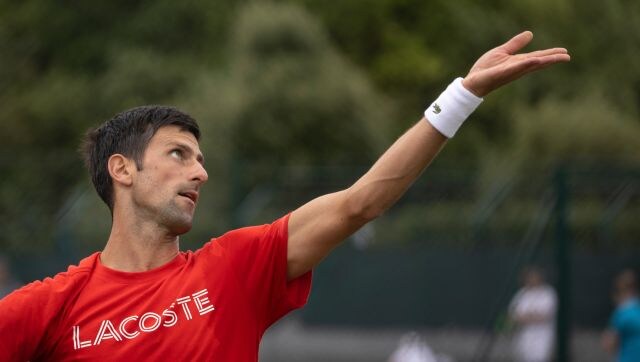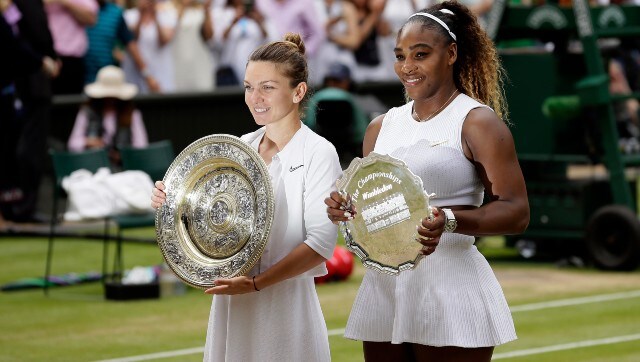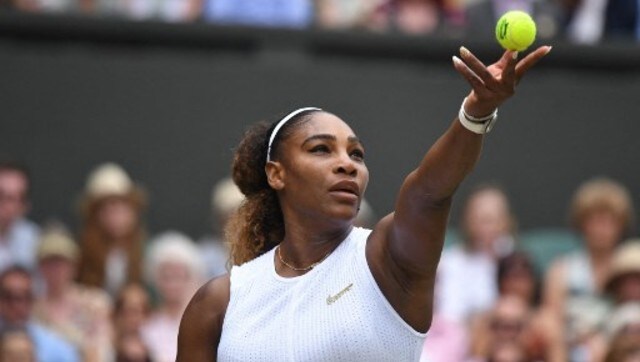Explained: Is grass to blame for Serena Williams' Wimbledon exit? All you need to know about Grand Slam surfaces
Neither was Serena Williams the only one to quit after sustaining an injury. Adrian Mannarino, who had gone up against eight-time champion Roger Federer, too, withdrew after slipping and hurting himself.

Serena Williams slipped and fell on the court prompting an early retirement from Wimbledon. AP
When 23-time Grand Slam champion Serena Williams dropped out of this year's Wimbledon after a falling and injuring her leg during a singles match in the very first round, disbelief and disappointment among her legions of supporters gave way to talk that the grass top may have had a role in the American tennis icon retiring hurt, maybe from her last championship at the All England Club. Critics of the courts could point to multiple cases of players falling and injuring themselves.
And neither was Williams the only one to quit after sustaining an injury. Adrian Mannarino, who had gone up against eight-time champion Roger Federer, too, withdrew after slipping and hurting himself. While Wimbledon organisers have defended the courts, lawn tennis is, of course, a game played on a variety of surfaces. Here's what you need to know about them.
What are the different surfaces that the Four slams are played on?
The first slam of the year, the Australian Open, is played on a hard surface— typically made of rigid material like asphalt or concrete— as is the last slam, the US Open. The French Open, which follows the event Down Under, is played on clay courts while Wimbledon, of course, is played on grass. But this blanket description won't do.
According to the Australian Open organisers, this tournament is played on "cushion acrylic hard courts" while the US Open is played on the trademark DecoTurf since 1978, which comes with a thin layer of rubber for cushioning.
The French Open clay courts are made of a mixture of crushed shale, stone or brick and 100 percent Perennial Ryegrass has since 2001 been the surface at the Wimbledon championships.
How does the surface impact the game play?
From the type of play to the power of serves, the playing surface makes all the difference. Experts will tell you that while hard courts are generally regarded as being fast, though not more so than grass, the speed of the specific surface depends on the type of material and technology used. Hard courts favour big-serving, power players and normally make for shorter volleys.
Clay courts are the slowest surface but are known to generate high bounce, affording longer rallies with the ball coming more slowly on to the racquet. These courts favour players who like to operate from the baseline and employ tricks like topspin to score points.
Arguably the fastest surface in lawn tennis is the grass top. But combined with the speed is the lack of bounce. The trademark play on grass courts is the 'serve and volley', in which the server moves close to the net after service so that she or he can execute an attacking volley off the return.
The governing body of world tennis, the International Tennis Federation (ITF), has devised a system called Court Pace Rating, or CPR, to determine the speed of a particular playing surface. What the system does is to, among other things, measure the impact the surface has on the ball, accounting for everything from friction, change in velocity and the time between bounces.
What is the controversy at this year's Wimbledon?
Reacting to Williams' slip and withdrawal, Federer had suggested that the grass surface may be tricky.
“I do feel it feels a tad more slippery, maybe, under the roof. I don’t know if it’s just a gut feeling. You do have to move very, very carefully out there. If you push too hard in the wrong moments, you do go down,” the Swiss tennis star said. He added that to him, the court felt “drier during the day".
"With the wind and all that stuff, it takes the moisture out of the grass,” he said. But Federer was quick to point out that he doesn't find the courts different this year, when Wimbledon is back after a gap year in 2020 due to the COVID-19 pandemic.
pandemic.
"I don’t think it plays very different. It’s always been like this. I feel for a lot of players, it’s super key to get through those first two rounds because the grass is more slippery, it is more soft. As the tournament progresses, usually it gets harder and easier to move on," he said.
It was a view echoed by the Wimbledon organisers, who defended the courts amid criticism following Williams' exit. "With each match that is played, the courts will continue to firm up," they said on the tournament's website, adding that wet weather conditions have not helped matters "at a time when the grass plant is at its most lush and green, which does result in additional moisture on what is a natural surface".
Do the top slam winners all have their pet surfaces?
To answer this question is to trigger off a debate with seemingly no end. But here's what the statistics say:
Among the top three men's singles players, Federer and Rafael Nadal have both 20 grand slam titles in their kitty. While it can be argued that the Wimbledon is Federer's favourite competition— given that it accounts for the highest number of his slam wins— there can be no doubt that Nadal is the king of the French Open. As many as 13 of his total slams have come in Paris while the Spaniard has only two Wimbledon titles.
Novak Djokovic, the Serbian ace who is third on the list of all-time highest grand slam winners with 19 titles, has found the greatest success on the hard courts of the Australian Open, having won there nine times.

A graphical representation of men with most Grand Slams. Courtesy: Kenneth Mohanty
The top player in terms of grand slam wins on the women's side is Australian legend Margaret Court, who last played a grand slam singles match in 1973. Her 24 wins are made of 11 Australian Open titles. Right after her is Williams, who would have tied Court for total grand slam wins had she managed to go all the way at this year's Wimbledon. There is some consistency to Williams' record at the slams as she has won seven times each at the Australian Open and Wimbledon while also picking up six US Open titles. The three of her remaining slam titles came at the French Open.

A graphical representation of women with most Grand Slam titles. Courtesy: Kenneth Mohanty
The third player on the women's winners' list, the German Steffi Graf has 22 singles slam titles. Her most successful slam is Wimbledon, which she has won seven times, followed by the French Open, where she has lifted the trophy on six occasions.
also read

Wimbledon 2021 men's preview: Novak Djokovic overwhelming favourite to go level with Roger Federer, Rafael Nadal
Novak Djokovic is a strong favourite to win the men's singles title at Wimbledon. But there are couple of challengers that could derail his plans to go level with Roger Federer and Rafael Nadal on 20 Slams.

Wimbledon 2021: Roger Federer, Serena Williams primed for blockbuster openers on Super Tuesday
Roger Federer and Serena Williams hope to defy the doubters when they get their Wimbledon campaigns underway on 'Super Tuesday' at the All England Club

Wimbledon 2021: Ball in Serena Williams's court as rivals battle fitness concerns
The tennis legend could even hold the record outright if she wins both Wimbledon and the US Open but despite holding her own in the top 10, there is a fear that age is impacting on her powers.